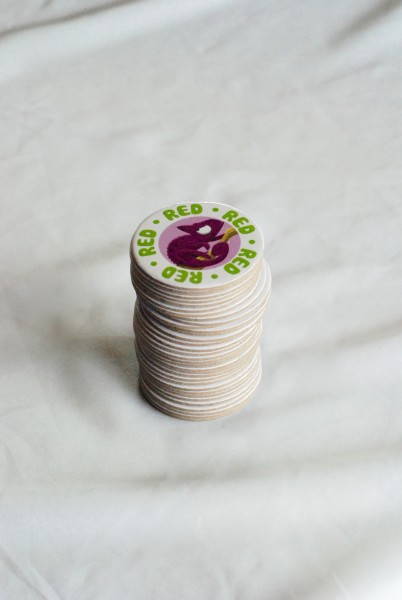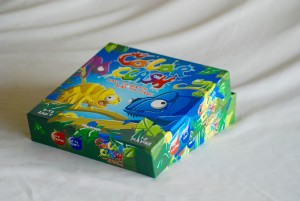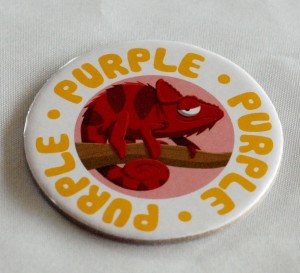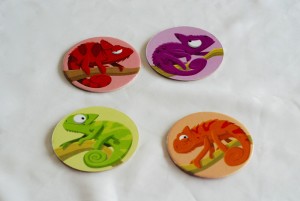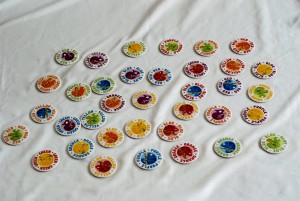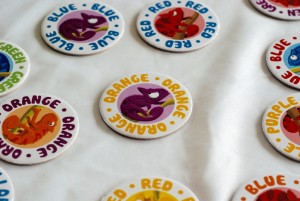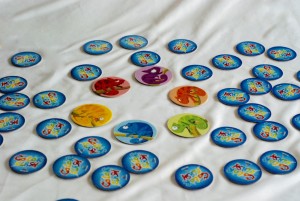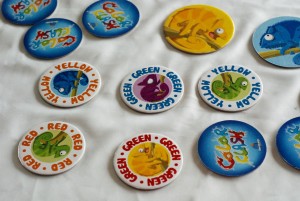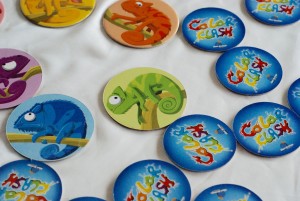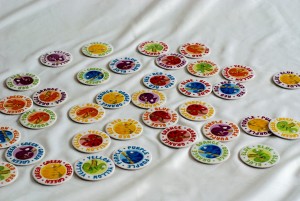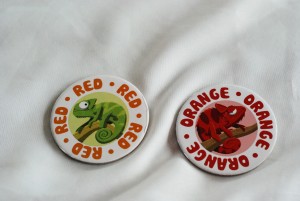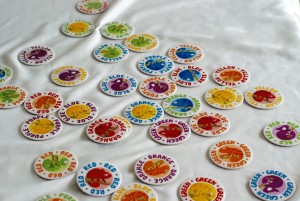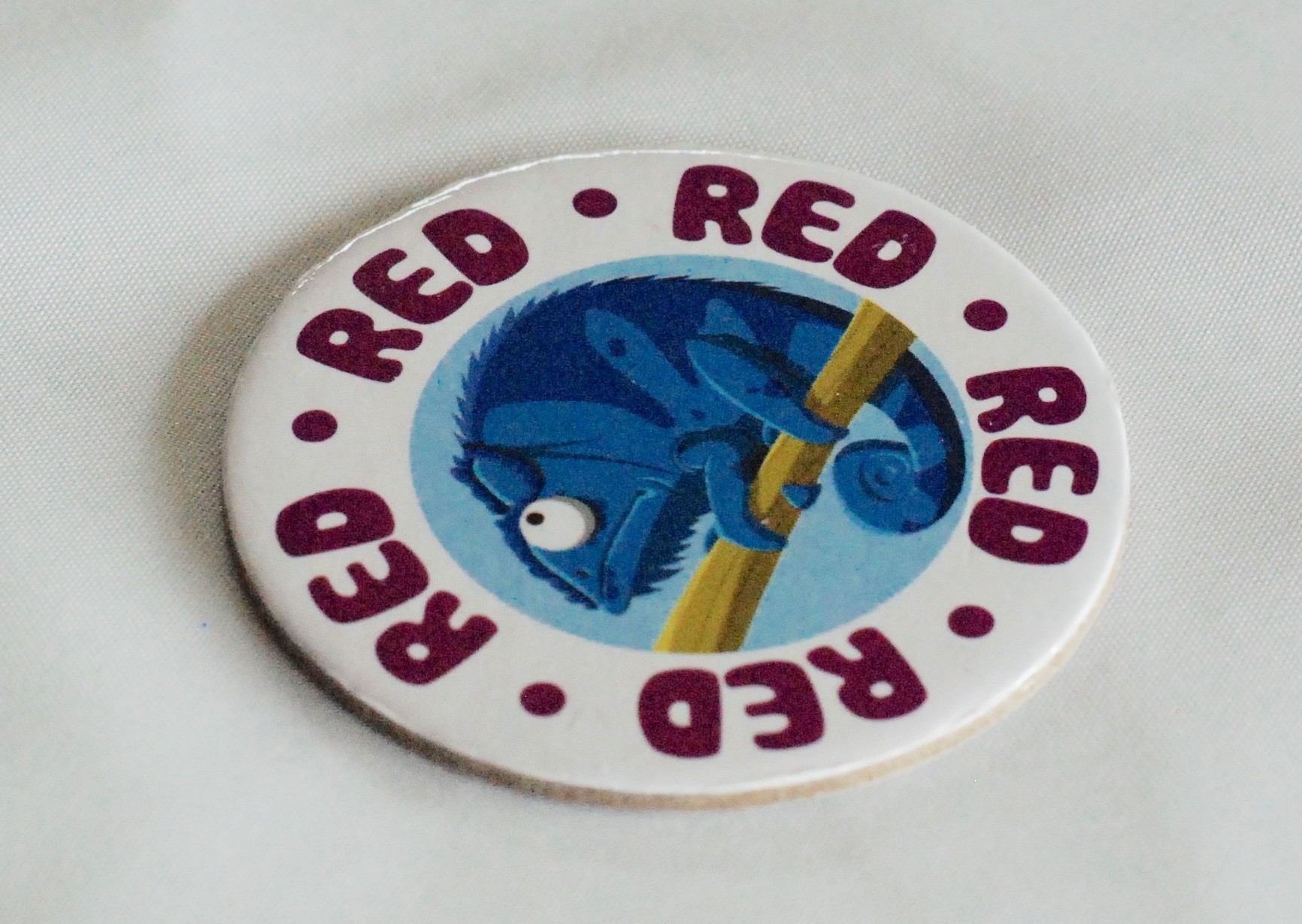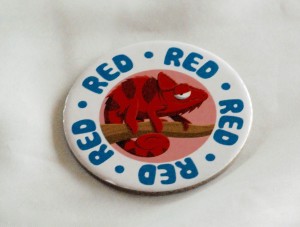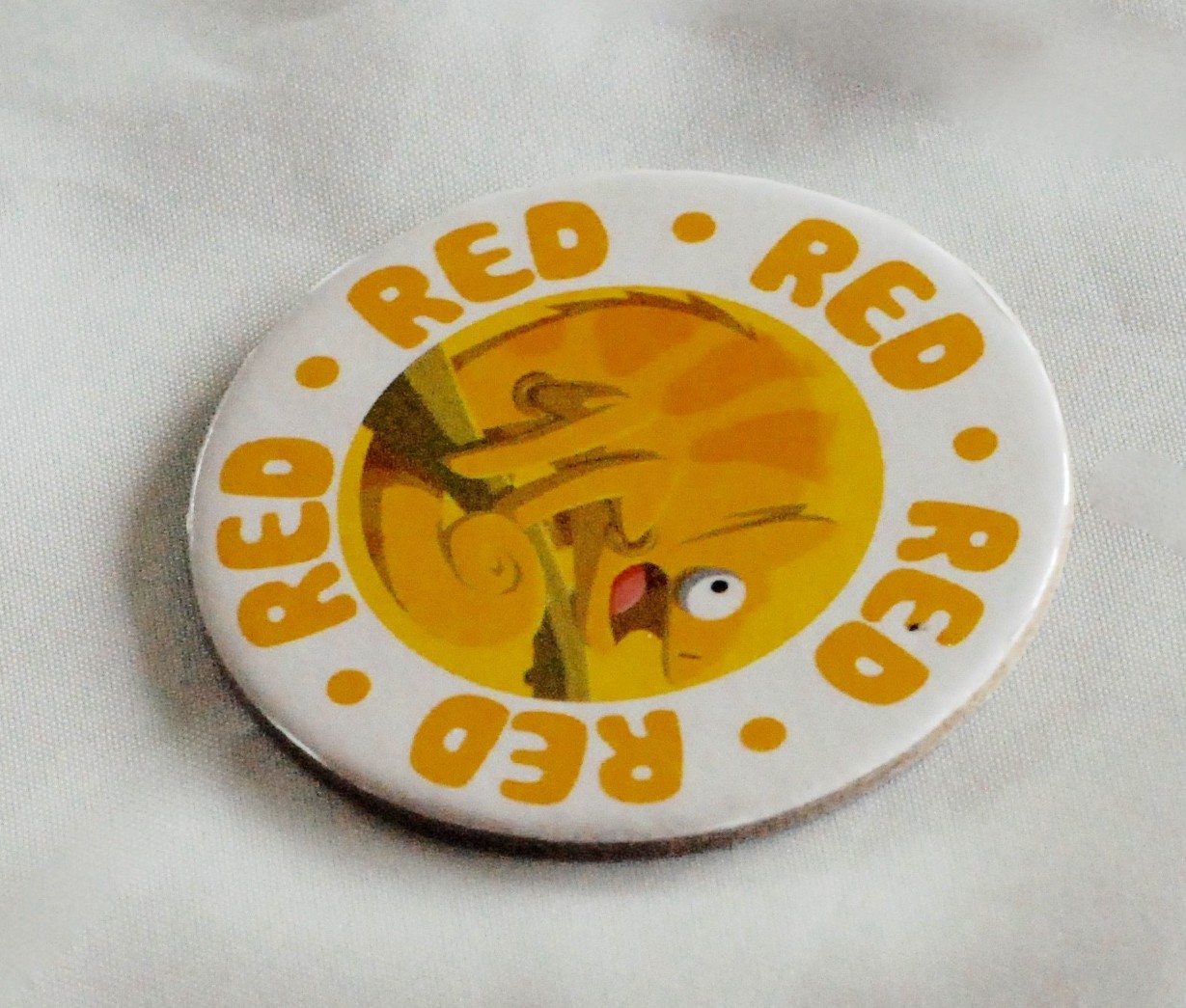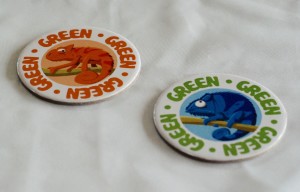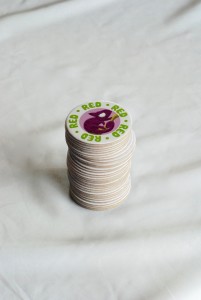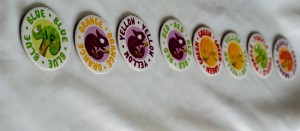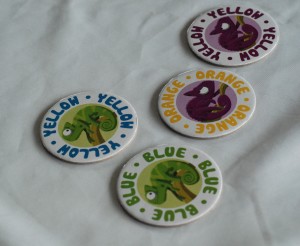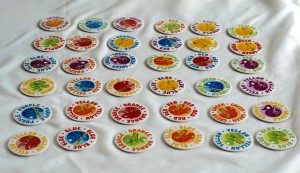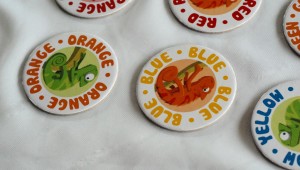How-to: Color Clash
Color Clash from Blue Orange Games is more than one game — it's eight.
I'm going to show you how each of them work. If you'd rather, you can watch this video, which includes my opinions of the game, or read my written review.
But before we start, you need to understand how the tiles in Color Clash work.
Each tile has three attributes.
The first is the color of the chameleon. In this case, it's red.
Next is the word that is written — purple.
Finally, you have the color the word is written in — yellow.
You'll need to pay attention to those attributes in every game included in Color Clash.
There are also six big chameleon tiles like the ones above. They're used in a few of the games.
Guess What I'm Thinking
Guess What I'm Thinking is for three to eight players.
First, you spread out all the small tiles face up on the table.
The starting player chooses one of the tiles and calls out the three colors on the tile. The other players have to touch a match as quickly as they can. (There could be more than one match.
If we were playing, I would say "Purple. Yellow. Orange."
Did you find this tile?
That's the game. The player with the most tiles when only six are left on the table wins.
Between Four
Between Four is also for three to eight players.
In this game, the small tiles are laid out face down, and the big ones are placed in the middle.
The starting player flips a tile, and each player flips one in turn until one color shows up four times. Like this.
Here green appears four times. See if you can find them all. The first person to notice places their hand on the big green chameleon tile.
The rules say "Place your hand on ...," but this game will quickly start feeling like a much harder version of Slap Jack.
The player gets to take all the tiles in question. The player with the most when all the possible tiles are gone wins.
Antipode
Antipode is for two to eight players.
In this game, you'll only be looking at the words on the tiles and the color they're printed in.
Once again, all the small tiles are placed face up on the table.
You're looking for tiles where the name of the color on one tile matches the color of the print on the other and vice versa.
Like this:
Like all the games in Color Clash, this is trickier than it looks. Your job is to pick up the most pairs. Everyone plays at once.
Family Spirit
Family Spirit is a game for two to eight players.
In Family Spirit, you start with all the small tiles face up except one. That becomes the starting tile.
Here's our starting tile.
Every player's job is to pick up all the tiles they can with any of the starting tile's attributes. For this tile, that would be all of the blue chameleons, all tiles with the word "red," and all tiles where the word is printed in purple.
I count 13 matches in the picture of the setup. So you can imagine the frenzy. The person with the most tiles wins.
Take the Opportunity!
Take the Opportunity! is a game for two to eight players.
The game begins with all of the small tiles face down and the large tiles in the center of the table.
Each player then flips one tile, which becomes his or her starting tile.
We'll imagine this is our starting tile:
The starting player turns over another tile from the table. This one, for instance:
If we have a color in common with this tile, we slap the big chameleon of that color, which in this case would be red.
The second tile becomes our new starting tile. The person with the most tiles wins.
Western
Western is a game for two to eight players.
The setup is just like Take the Opportunity!, except players don't start with a starting tile.
Instead, the starting player picks another player for a duel. Each player flips a tile, so the table will look something like this:
Players look for the majority color — the one that has the most occurrences on both tiles — and slap the big tile of that color.
The quickest player takes both tiles — provided he or she is right, of course. The player with the most tiles wins.
Pyramid
Pyramid is a game for one player, though it could be played cooperatively with more.
There are three setups based on difficulty — easy, medium, and hard. This is the medium setup:
At the base of the pyramid, the player can place any tiles he or she wants. The base will eventually become eight tiles across.
To build up, the player must match at least one attribute from the tile he or she is placing to at least one on each of the tiles below it.
If you can place all the tiles, you win.
Building
Building is the final game contained in Color Clash. It is another solitaire game.
The game begins with all of the small tiles set up in a six-by-six grid.
The player can move any tile that has at least one free border onto another tile that has at least one color in common.
So either of these tiles could be placed on top of the other.
You can also move piles of tiles, so you can end up with something that looks like this:
If you can get all the tiles into one pile, you win.
If this sounds like fun to you, you should definitely check out Color Clash.
